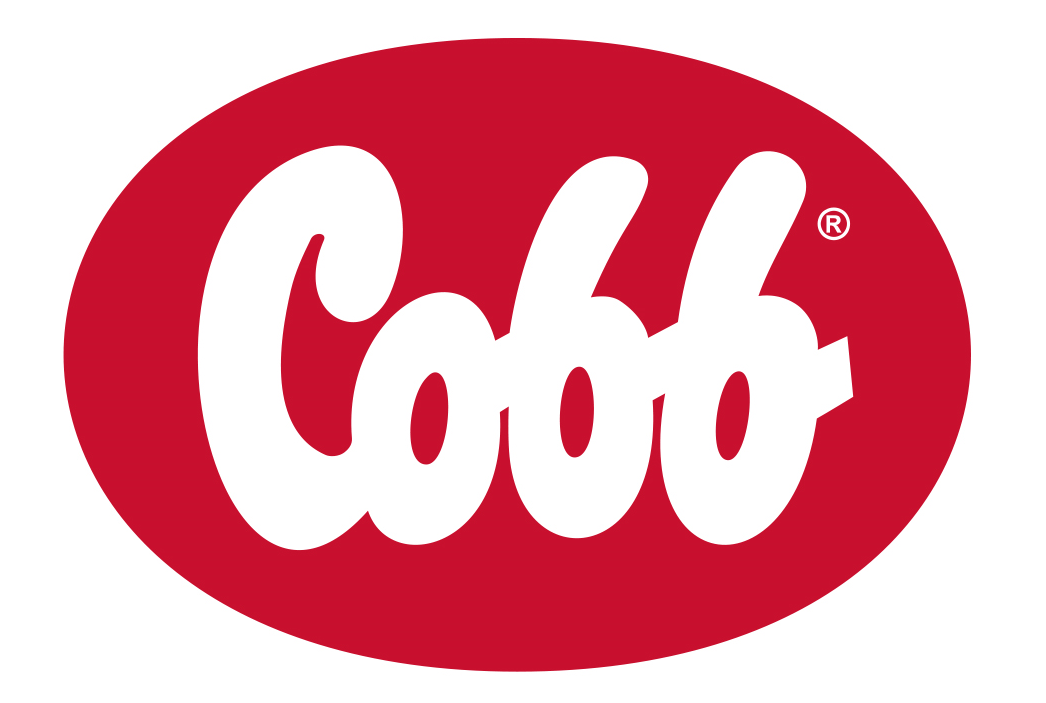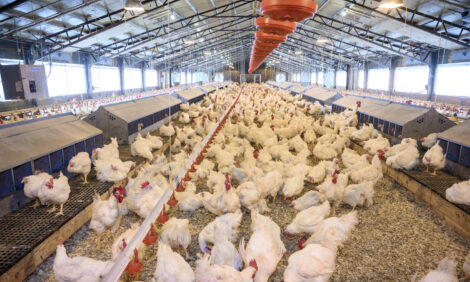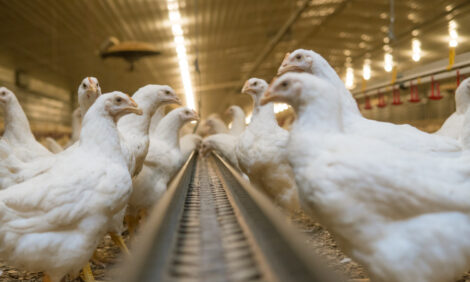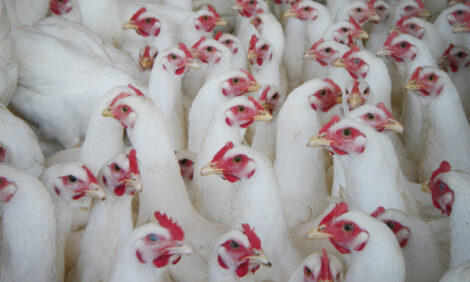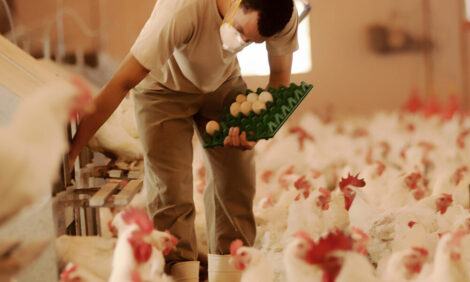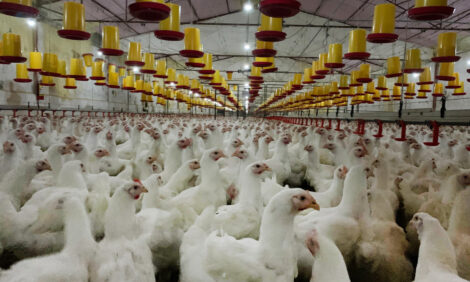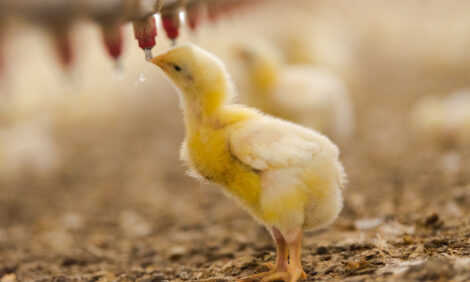



Cobb Breeder Management Guide: Brooding design and management
Learn more about designing the brooding chamber to increase size quickly while maintaining temperaturePart of Series:
< Previous Article in Series Next Article in Series >
Editor's note: This article is an excerpt from the Cobb Breeder Management Guide and additional articles will follow. The Guide was designed to highlight critical factors that are most likely to influence flock performance. The management recommendations discussed were developed specifically for Cobb products. The recommendations are intended as a reference and supplement to your own flock management skills so that you can apply your knowledge and judgement to obtain consistently good results with the Cobb family of products. To read or download the complete Guide or to view Cobb's other management guides, click here.
The goal of the brooding chamber design and management is to increase the size of the brooding area as quickly as possible, while maintaining the correct house temperature. Heat and ventilate the unused area to the correct temperature at least 24 hours prior to expanding the brooding area. Generally, the rearing house partitions should be completely open after 14 to 16 days, varying according to the final density capacity and the house structure conditions.
The placement density in the brooding chamber will depend on the size of the brooding area and the equipment. Initial stocking should not exceed more than 55 to 60 birds per m² (0.18 to 0.20 ft2 per bird). Ensure adequate drinking space, especially during summer placements - calculate 40 birds per nipple if nipples are easily activated.
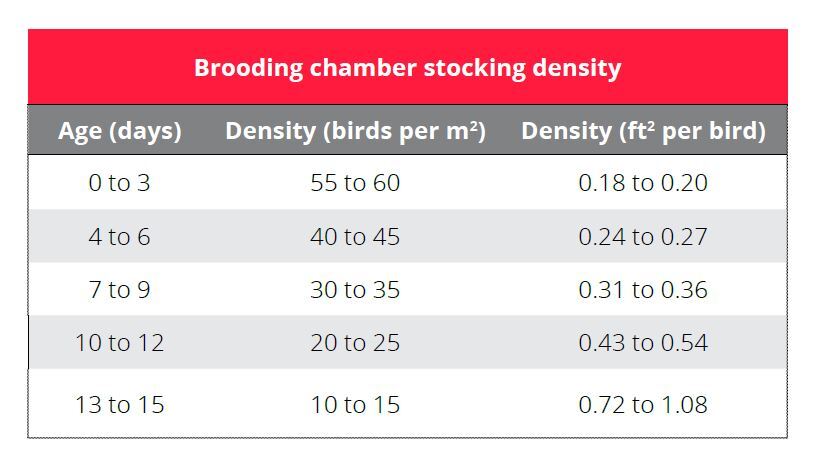
Stocking density
Chicks from donor sources of a similar age should be placed together in the same pen (or house) upon arrival at the farm. Rearing these groups together will improve subsequent flock uniformity.
Correct stocking density is essential to ensure great performance during rearing. In addition to performance and uniformity, correct stocking density also has important welfare implications. To accurately assess stocking density, factors including climate, housing types, ventilation systems, processing and welfare regulations must be considered.
It is most important to remember that stocking density throughout rearing and production are guided by both feeder and drinker space requirements. Feeder space is the most important space requirement regardless of age. If feeder space requirements are not met, flock uniformity will suffer as birds compete for available feed. Drinker space is similarly important as birds must drink water to digest feed. After finishing the feed there will be some competition for water access.
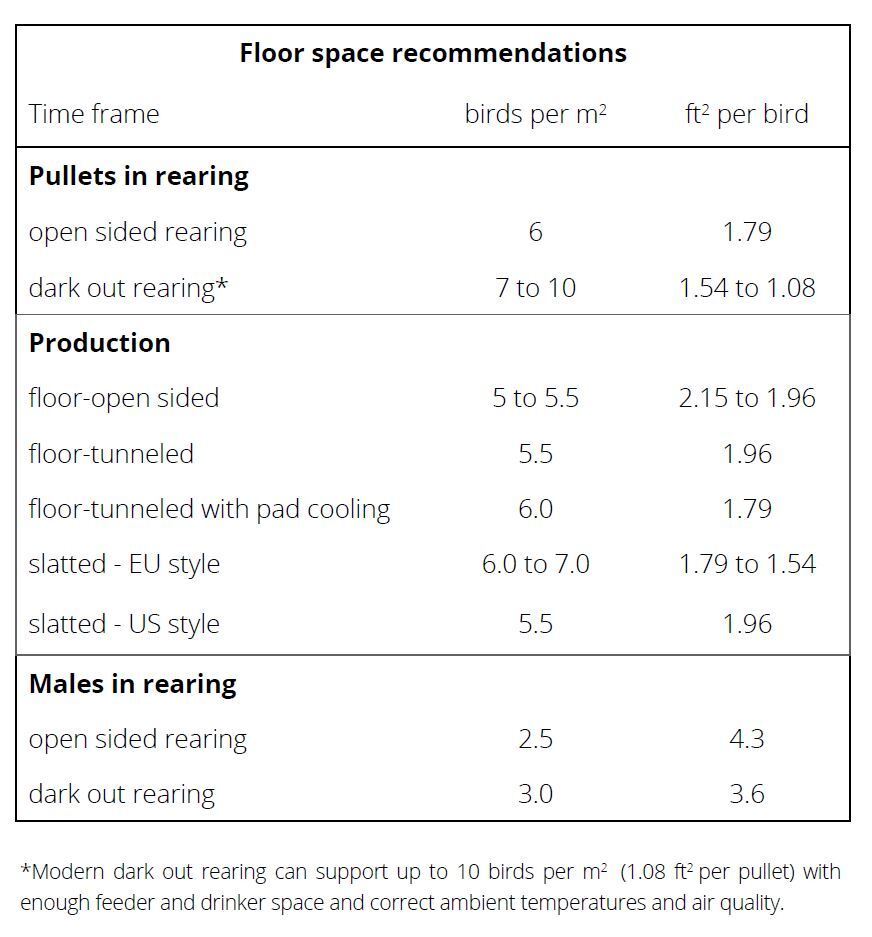
Cobb recommends that males be reared separately from females from placement to transfer or mixing (approximately 20 to 23 weeks). This practice will allow farmers to optimize frame size, uniformity and bodyweight targets of both males and females. Males should be given extra floor space during rearing to ensure they achieve their target bodyweights. Males will be significantly heavier than the females at the same age. Therefore, bodyweight control is essential for uniform frame size development and sexual synchronization with the females.
Supplementary drinkers
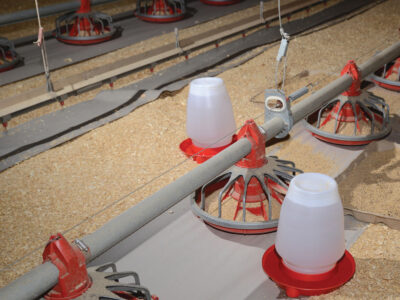
Many modern poultry houses are well-equipped with drinker systems that can be used by chicks at placement. When possible, use only the primary drinker systems so chicks will learn to use the system as quickly as possible.
If supplemental drinkers are necessary, open trays are not recommended since chicks may immerse themselves in these and / or contaminate the water with litter and feed which results in poor water quality. Supplemental drinkers should never be placed directly beneath the brooders as this will heat the water and it will become too warm to drink as well as increase water evaporation.
Supplementary feeders
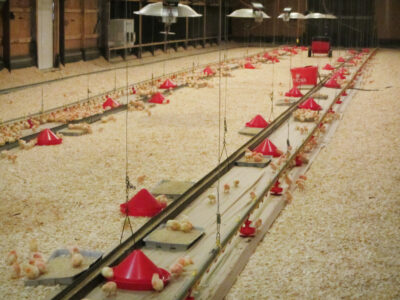
Supplemental feeding equipment should not be placed directly under or too close to the brooders and feed should be distributed just prior to the chicks’ arrival. Provide one feeder tray for every 75 chicks at day old and ensure that supplementary feed remains fresh. Remove supplementary feeder trays after day 7.
Another option is to place a total of 30 g of feed per bird on paper covering 50 % of the placement area. This feed allocation should be consumed within the first 3 days. The paper used must be durable and resistant to puncture. We do not recommend used newsprint or other kinds of re-used paper because of biosecurity related risks and material quality. Remove any remaining paper after the feed is consumed.
Litter management
Cover the whole floor with new, fresh litter. It is important that the litter material provide a soft, dry surface that conducts radiant heat. Level the bedding by raking and compressing firmly. Uneven litter creates uneven floor temperatures, causing groups of chicks to huddle in pockets or under equipment. Uneven litter can also result in unintended restricted access to feed and water at this critical time of development.
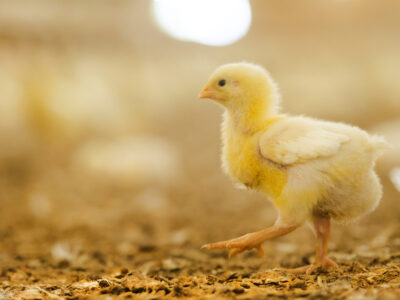
Litter height depends on the floor insulation, the use of plastic below the concrete floor to prevent capillary action of water, summer and winter conditions, ventilation and bird densities. Try to use the least amount of litter possible so that it is easier to work in the litter and maintain the litter height level. The litter will accumulate bird droppings from rearing through production. A good reference is to use 3 to 5 cm (1 3/16 to 2 in) in summer conditions and 5 to 7 cm (2 to 2 3/4) in winter.
Enrichments
Enrichments are considered to be beneficial as they may reduce “negative behaviors” and may increase “positive behaviors” for poultry. Enrichments typically consist of sensory stimuli that provide choice(s) for the animal within the environment. The object or device may result in a change in behavior/activity related to social interaction (ex: increases or decreases direct/indirect contact with other animals), occupational outcome (ex: encourages exercise or a challenge in the environment), physical outcome, sensory stimulation (ex: visual, auditory) or nutritional stimulation.
For poultry, welfare-related goals for incorporating enrichments into the rearing and laying environment include: increase behavioral diversity; reduce the frequencies of abnormal/negative behavior; increase the range of normal behavior(s); increase positive utilization of the environment; and increase the ability of the animal to cope with challenges or changes. Additionally, for poultry, flock performance-related goals of incorporating enrichments can include: improved flock mixing in scratch areas; reduction in floor eggs; improved foot and leg health; reduced breeder flock mortality; and improved total egg production for the breeder flock.
Enrichments should not adversely affect the health and welfare of the flock (i.e. enrichments that pose an injury or entrapment threat should not be used), should not increase biosecurity risk, and should not be economically deleterious.
Typical enrichments that can be used in broiler breeder farms include physical enrichments (ex: ramps, perches and platforms (slats) or items that provide additional shelter (small huts/tents)), nutritional and social stimuli to increase foraging or dust-bathing activity (ex: bales, pecking blocks, feed scattering), and sensory stimuli (ex: lighting or noise stimuli to train poultry). It is important to note that not all enrichments can be used in both rearing and production and should therefore be carefully planned and implemented for the age and type of chicken. Other enrichments, such as slats and perches, may be used in both rearing and laying farms to encourage birds to experience raised equipment and different flooring types so that they will acclimate more quickly to production house configurations where slatted floors and elevated perches are commonly used. Chain feeders in rearing should be managed for height so that all birds have easy access to feed but at the same time require the birds to only jump on and over the tracks to enhance mobility and activity. Having a feeder track with legs can permit the birds to perch.
Lighting
The intensity and distribution of light alters bird activity. Correct stimulation of activity with lighting during the first 5 to 7 days of age is necessary for optimal feed consumption, digestive and immune system development and good welfare. Light intensity should be 60 to 100 lux (6 to 10 fc) directly below the light and measured at chick height to enhance chick activity and encourage good early feed and water intake. Concentrating light around the nipple line will attract the chicks and improve early water and feed intake as they learn from each other.
Chicks should be given 23 hours of light at placement. At 4 days of age, start reducing the light period. Always turn the lights on at the same time every day. When adjusting the lighting period, always change the lights out time. By reducing light intensity every day by 1 or 2 hours, the recommended 8-hour day length will be achieved by 14 days of age. We recommend continuing 8 hours of light with 2 to 4 lux light intensity until photo stimulation depending on the light source (See Chapter 6).
Light intensity should not vary more than 20 % from the brightest to darkest place at floor level. Different light sources can have wide variations in light intensity at bird level. Uniform light distribution (>80 %) in rearing will help to maintain even litter levels across the house, maintaining a consistent height from the litter to the chain or pan feeders. This is important for all females to easily access feed at the same time. With uneven light intensity distribution in the house at bird level, the birds tend to scratch litter in the brighter areas causing uneven heights along the feeder track. Uneven access to feeders then will contribute to poor flock uniformity.
Do not increase light intensity during vaccination, bird weighing and grading. All maintenance work to the house should be done during the 8-hour lights on period. Increasing or decreasing light intensity will make birds less sensitive to photo stimulation after 21 weeks of age. A long day length (>10 hours) in rearing will delay sexual development of both females and males and should be prevented.








